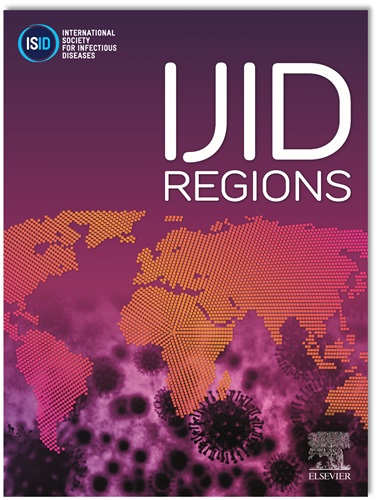Clinical trial landscape for pneumonia: Evolving agents against bacterial pathogens
IF 4.8
2区 医学
Q1 INFECTIOUS DISEASES
引用次数: 0
Abstract
Objective
Pneumonia remains a critical global health challenge, with antimicrobial resistance fundamentally reshaping therapeutic paradigms. This study aimed to characterize global trends in pneumonia-related clinical trials and assess the pipeline response to escalating antimicrobial resistance challenges.
Methods
We conducted comprehensive analysis using the INFORMA Database, searching MeSH terms ‘Community-acquired pneumonia’ and ‘Hospital-acquired pneumonia’ while restricting inclusion to bacterial infections. Interventional clinical trials investigating therapeutic agents for bacterial pneumonia were included. Data collection encompassed trial status, primary drugs, mechanisms of action, patient demographics, and completion dates. Statistical analyses included Cochran-Armitage trend tests for temporal patterns, and Chi-square goodness of fit test for age-stratified analyses.
Results
A total of 2,448 pneumonia-related clinical trials were identified across 113 countries from 1991 to 2024. Phase I trials demonstrated pronounced acceleration, increasing from 3.00 trials per year (1991-2000) to 14.82 trials per year (2020-2024). Five therapeutic mechanisms dominated research: cell wall synthesis inhibitors (24.5%), ribosomal subunit inhibitors (13.5%), DNA topoisomerase inhibitors (12.8%), beta-lactamase inhibitors (9.3%), and cell membrane-related mechanisms (7.9%). Agestratified analysis revealed significant disparities, with elderly-specific trials comprising only 2.8% despite higher disease burden.
Conclusion
This analysis reveals accelerating early-phase drug development in response to antimicrobial resistance challenges. While traditional mechanisms remain dominant, novel therapeutic approaches demonstrate promising diversification strategies, though critical gaps persist in elderly-specific drug development.
肺炎的临床试验前景:对抗细菌性病原体的进化剂。
肺炎仍然是一项重大的全球卫生挑战,抗菌素耐药性危机的不断升级加剧了这一挑战。通过对三十年临床试验的综合分析,本研究揭示了抗肺炎药物开发的发展前景。通过对临床试验数量和治疗机制的分析,我们的研究结果表明,在过去十年中,早期临床试验的数量大幅增加,反映了对抗日益增长的抗菌素耐药性的努力,而DNA拓扑异构酶抑制的研究在最初的发展激增后有所下降。尽管碳青霉烯类药物是肺炎治疗的基石,但它们面临着越来越多的耐药性相关死亡风险,特别是在以耐药病原体为主的医院获得性肺炎(HAP)中。鉴于不同年龄组的病原体易感性不同,我们进行了年龄分层分析。虽然细胞壁合成抑制等传统机制仍然占主导地位,但增强药物传递和抗菌作用的创新方法正在出现,例如噬菌体治疗、非离子银纳米颗粒和抗体-药物偶联物。这一景观分析不仅综合了历史和当前的治疗趋势,而且强调了对抗耐药性的有希望的方向,强调了后抗生素时代对新型药物的迫切需要。
本文章由计算机程序翻译,如有差异,请以英文原文为准。
求助全文
约1分钟内获得全文
求助全文
来源期刊
CiteScore
18.90
自引率
2.40%
发文量
1020
审稿时长
30 days
期刊介绍:
International Journal of Infectious Diseases (IJID)
Publisher: International Society for Infectious Diseases
Publication Frequency: Monthly
Type: Peer-reviewed, Open Access
Scope:
Publishes original clinical and laboratory-based research.
Reports clinical trials, reviews, and some case reports.
Focuses on epidemiology, clinical diagnosis, treatment, and control of infectious diseases.
Emphasizes diseases common in under-resourced countries.

 求助内容:
求助内容: 应助结果提醒方式:
应助结果提醒方式:


